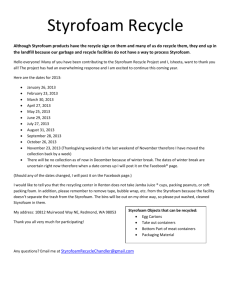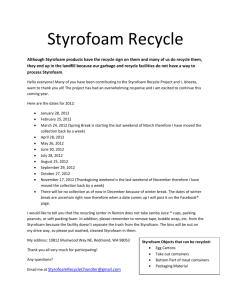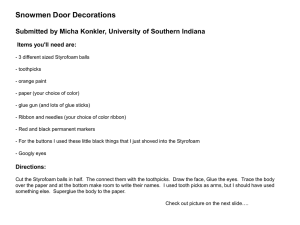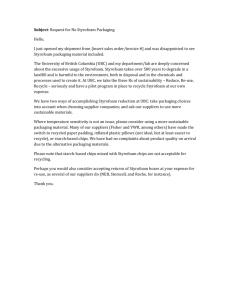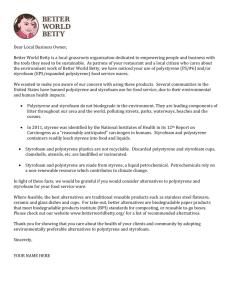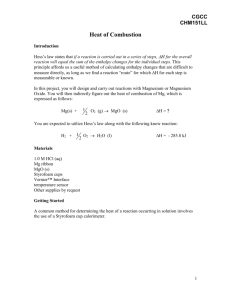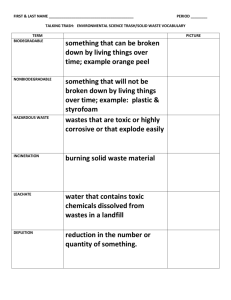agad_gongob_chap1_reviewed
advertisement
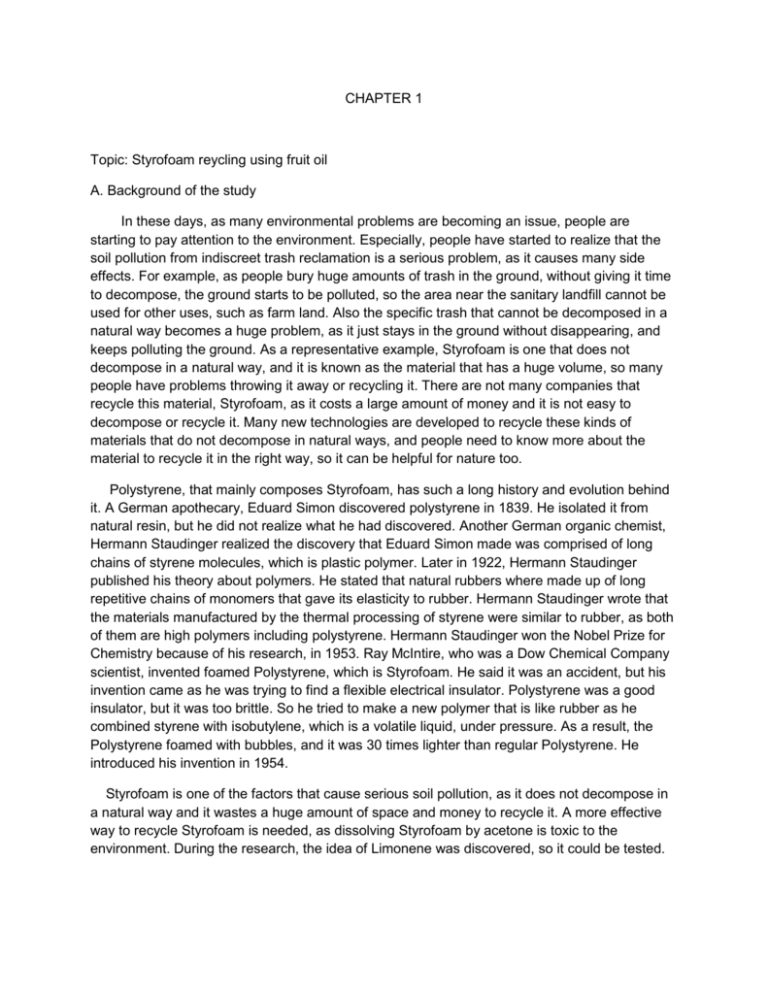
CHAPTER 1 Topic: Styrofoam reycling using fruit oil A. Background of the study In these days, as many environmental problems are becoming an issue, people are starting to pay attention to the environment. Especially, people have started to realize that the soil pollution from indiscreet trash reclamation is a serious problem, as it causes many side effects. For example, as people bury huge amounts of trash in the ground, without giving it time to decompose, the ground starts to be polluted, so the area near the sanitary landfill cannot be used for other uses, such as farm land. Also the specific trash that cannot be decomposed in a natural way becomes a huge problem, as it just stays in the ground without disappearing, and keeps polluting the ground. As a representative example, Styrofoam is one that does not decompose in a natural way, and it is known as the material that has a huge volume, so many people have problems throwing it away or recycling it. There are not many companies that recycle this material, Styrofoam, as it costs a large amount of money and it is not easy to decompose or recycle it. Many new technologies are developed to recycle these kinds of materials that do not decompose in natural ways, and people need to know more about the material to recycle it in the right way, so it can be helpful for nature too. Polystyrene, that mainly composes Styrofoam, has such a long history and evolution behind it. A German apothecary, Eduard Simon discovered polystyrene in 1839. He isolated it from natural resin, but he did not realize what he had discovered. Another German organic chemist, Hermann Staudinger realized the discovery that Eduard Simon made was comprised of long chains of styrene molecules, which is plastic polymer. Later in 1922, Hermann Staudinger published his theory about polymers. He stated that natural rubbers where made up of long repetitive chains of monomers that gave its elasticity to rubber. Hermann Staudinger wrote that the materials manufactured by the thermal processing of styrene were similar to rubber, as both of them are high polymers including polystyrene. Hermann Staudinger won the Nobel Prize for Chemistry because of his research, in 1953. Ray McIntire, who was a Dow Chemical Company scientist, invented foamed Polystyrene, which is Styrofoam. He said it was an accident, but his invention came as he was trying to find a flexible electrical insulator. Polystyrene was a good insulator, but it was too brittle. So he tried to make a new polymer that is like rubber as he combined styrene with isobutylene, which is a volatile liquid, under pressure. As a result, the Polystyrene foamed with bubbles, and it was 30 times lighter than regular Polystyrene. He introduced his invention in 1954. Styrofoam is one of the factors that cause serious soil pollution, as it does not decompose in a natural way and it wastes a huge amount of space and money to recycle it. A more effective way to recycle Styrofoam is needed, as dissolving Styrofoam by acetone is toxic to the environment. During the research, the idea of Limonene was discovered, so it could be tested. B. Statement of the problem Main Problem: What could be the possible effects of fruit oils on the solubility of styrofoams? Sub problems: • Is there a significant difference on the ________ fruit oil used? • Will the amount of fruit oil used affect the solubilty rate of the styrofoam? C. Objectives of the study This study aims to determine which of the following fruit oil would be more effective in dissolving a styrofoam and to develop new eco-friendly ways of recycling Styrofoam. Also, to determine which fruit oil has the greater effect on the solubility of the styrofoam. D. Hypothesis of the study • There might not be effects on the styrofoam when applied with fruit oil. • There is no significant difference on the fruit oil used. • The amount of fruit oil used will not affect the solubility rate. E. Significance of the study If the way of extracting peel oil from orange and lemon peel easily is developed, people can use limonene from the peel in their house to recycle Styrofoam easily without wasting money and space for it. This idea should be given to all the people over the world, so they can recycle Styrofoam wisely in an eco-friendly way. This study will benefit people who uses styrofoam in their company and in their community rather than using acetone and gasoline as their solvents. This will also lessen the cases of soil pollution around the world. F. Scopes and Limitations This study will be conducted at the researcher’s residences on _________ 2011; academic year 2011-2012. This study is limited in the determination of the effects of fruit oil on the solubility of styrofoams. This study limits the amount of fruit oil used in the experiment. This study is also limited on the effects of fruit oils used in varying amounts.
